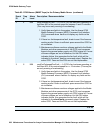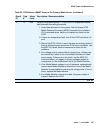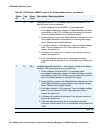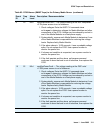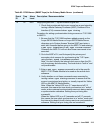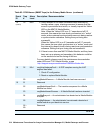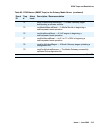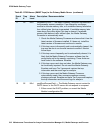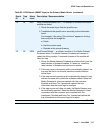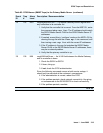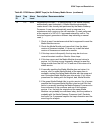
G700 Media Gateway Traps
314 Maintenance Procedures for Avaya Communication Manager 3.0, Media Gateways and Servers
14
(cont’d)
30 MAJ 5. Verify whether or not these commands were executed by
issuing a show sync timing command to ensure that the
source is provisioned and active, or visually inspect the Yellow
LED on the MM710 Media Module.
Note: When the Yellow LED is on 2.7 seconds and off 0.3
seconds, this means the tone-clock synchronizer is in “active”
mode, and an external synchronization source is being used as
a synchronization reference. Setting the sync timing was
successful.
When the Yellow LED is on 0.3 seconds and off 2.7 seconds,
this means the tone-clock synchronizer is in “active” mode and
the internal (on-board) clock is being used as a synchronization
reference. Setting the sync timing was not successful.
6. If there is more than one MM710 Media Module, and they have
been set up as primary and secondary, this behavior could be
on the second and not the timing of the bus.
For more details, please consult the maintenance documentation
under LEDs and T1/E1 Media Module, or see
http://support.avaya.com/elmodocs2/S8300/cd/index.htm
15 32 MAJ cmgVoipHardwareFault — A DSP complex serving the VoIP
engines has failed.
1. Check IP configuration.
2. Reset or replace Media Module.
50 cmgModuleRemove — A Media Module has been removed.
16 51 Reserved
52 cmgModuleInsertFault — The insertion sequence for a Media
Module has failed.
53 cmgModuleInsertSuccess — A Media Module has been inserted.
54 cmgMgBusyout — An administrator has busied-out a Media Module
or a port.
55 cmgMgRelease — An administrator has returned a busied-out
media module or port back into service.
56 –
69
Reserved
Table 83: G700 Alarms (SNMP Traps) to the Primary Media Server (continued)
Event
ID
Trap
#
Alarm
Level
Description / Recommendation
10 of 20



